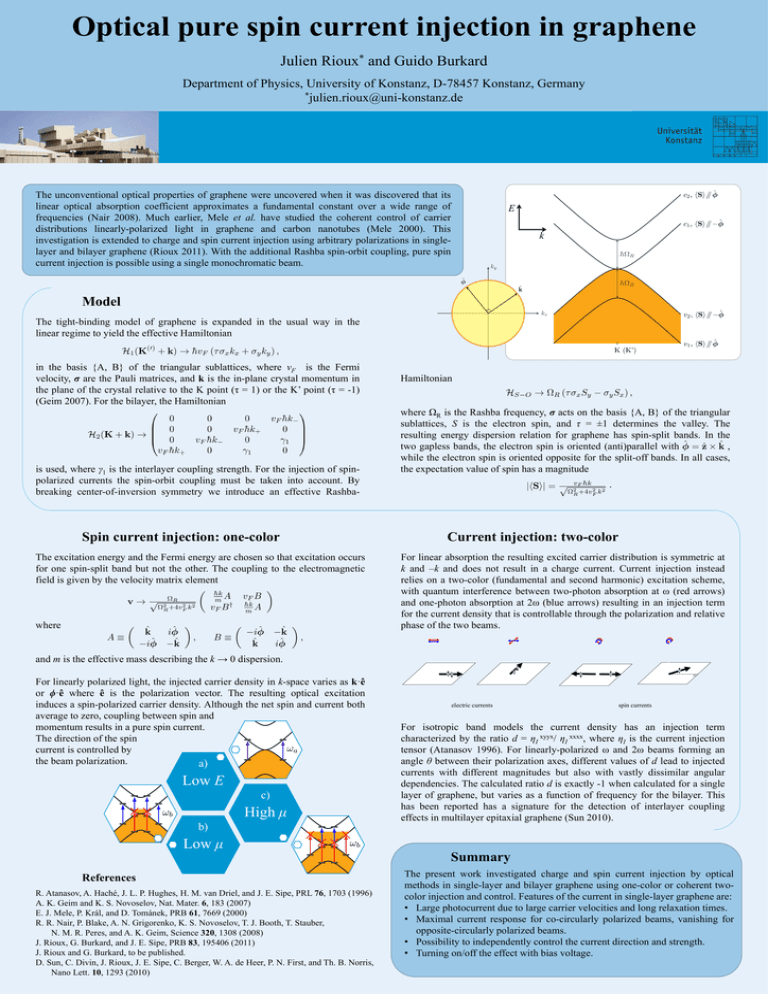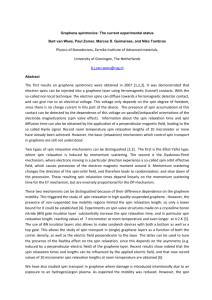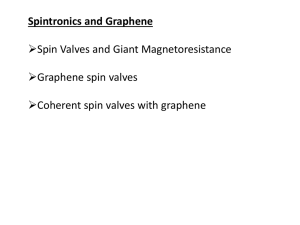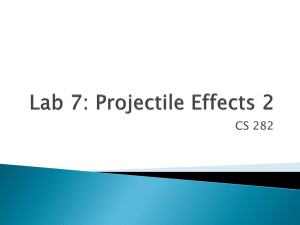Optical pure spin current injection in graphene
advertisement

Optical pure spin current injection in graphene
Julien
*
Rioux
and Guido Burkard
Department of Physics, University of Konstanz, D-78457 Konstanz, Germany
*julien.rioux@uni-konstanz.de
The unconventional optical properties of graphene were uncovered when it was discovered that its
linear optical absorption coefficient approximates a fundamental constant over a wide range of
frequencies (Nair 2008). Much earlier, Mele et al. have studied the coherent control of carrier
distributions linearly-polarized light in graphene and carbon nanotubes (Mele 2000). This
investigation is extended to charge and spin current injection using arbitrary polarizations in singlelayer and bilayer graphene (Rioux 2011). With the additional Rashba spin-orbit coupling, pure spin
current injection is possible using a single monochromatic beam.
E
k
Model
The tight-binding model of graphene is expanded in the usual way in the
linear regime to yield the effective Hamiltonian
in the basis {A, B} of the triangular sublattices, where vF is the Fermi
velocity, σ are the Pauli matrices, and k is the in-plane crystal momentum in
the plane of the crystal relative to the K point (τ = 1) or the K’ point (τ = -1)
(Geim 2007). For the bilayer, the Hamiltonian
is used, where γ1 is the interlayer coupling strength. For the injection of spinpolarized currents the spin-orbit coupling must be taken into account. By
breaking center-of-inversion symmetry we introduce an effective Rashba-
Spin current injection: one-color
The excitation energy and the Fermi energy are chosen so that excitation occurs
for one spin-split band but not the other. The coupling to the electromagnetic
field is given by the velocity matrix element
where
Hamiltonian
where ΩR is the Rashba frequency, σ acts on the basis {A, B} of the triangular
sublattices, S is the electron spin, and τ = ±1 determines the valley. The
resulting energy dispersion relation for graphene has spin-split bands. In the
two gapless bands, the electron spin is oriented (anti)parallel with
,
while the electron spin is oriented opposite for the split-off bands. In all cases,
the expectation value of spin has a magnitude
.
Current injection: two-color
For linear absorption the resulting excited carrier distribution is symmetric at
k and –k and does not result in a charge current. Current injection instead
relies on a two-color (fundamental and second harmonic) excitation scheme,
with quantum interference between two-photon absorption at ω (red arrows)
and one-photon absorption at 2ω (blue arrows) resulting in an injection term
for the current density that is controllable through the polarization and relative
phase of the two beams.
and m is the effective mass describing the k → 0 dispersion.
For linearly polarized light, the injected carrier density in k-space varies as k·ê
or ϕ·ê where ê is the polarization vector. The resulting optical excitation
induces a spin-polarized carrier density. Although the net spin and current both
average to zero, coupling between spin and
momentum results in a pure spin current.
The direction of the spin
current is controlled by
the beam polarization.
a)
Low E
c)
High μ
electric currents
spin currents
For isotropic band models the current density has an injection term
characterized by the ratio d = ηI xyyx/ ηI xxxx, where ηI is the current injection
tensor (Atanasov 1996). For linearly-polarized ω and 2ω beams forming an
angle θ between their polarization axes, different values of d lead to injected
currents with different magnitudes but also with vastly dissimilar angular
dependencies. The calculated ratio d is exactly -1 when calculated for a single
layer of graphene, but varies as a function of frequency for the bilayer. This
has been reported has a signature for the detection of interlayer coupling
effects in multilayer epitaxial graphene (Sun 2010).
b)
Low μ
Summary
References
R. Atanasov, A. Haché, J. L. P. Hughes, H. M. van Driel, and J. E. Sipe, PRL 76, 1703 (1996)
A. K. Geim and K. S. Novoselov, Nat. Mater. 6, 183 (2007)
E. J. Mele, P. Král, and D. Tománek, PRB 61, 7669 (2000)
R. R. Nair, P. Blake, A. N. Grigorenko, K. S. Novoselov, T. J. Booth, T. Stauber,
N. M. R. Peres, and A. K. Geim, Science 320, 1308 (2008)
J. Rioux, G. Burkard, and J. E. Sipe, PRB 83, 195406 (2011)
J. Rioux and G. Burkard, to be published.
D. Sun, C. Divin, J. Rioux, J. E. Sipe, C. Berger, W. A. de Heer, P. N. First, and Th. B. Norris,
Nano Lett. 10, 1293 (2010)
The present work investigated charge and spin current injection by optical
methods in single-layer and bilayer graphene using one-color or coherent twocolor injection and control. Features of the current in single-layer graphene are:
• Large photocurrent due to large carrier velocities and long relaxation times.
• Maximal current response for co-circularly polarized beams, vanishing for
opposite-circularly polarized beams.
• Possibility to independently control the current direction and strength.
• Turning on/off the effect with bias voltage.











